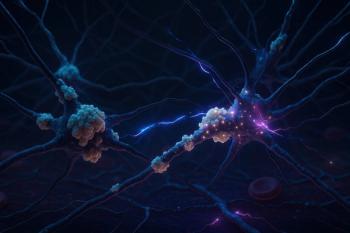
- Vol 41, Issue 12
Psychopharmacology Innovations
Key Takeaways
- Reserpine, a VMAT1 and VMAT2 inhibitor, was approved in 1955 for hypertension, with tetrabenazine later approved for Huntington's chorea.
- Deutetrabenazine and valbenazine, novel VMAT2 inhibitors, were FDA approved in 2017 for tardive dyskinesia, offering improved dosing and tolerability.
Check out 2 new psychopharmacology innovations!
Note: This article is a Sidebar to "
Vesicular Monoamine Transporter Type 2 Inhibitors
The US Food and Drug Administration (FDA) approved reserpine in 1955. Reserpine is a nonspecific irreversible inhibitor of both vesicular monoamine transporter type 1 (VMAT1) and VMAT2 transporters primarily used in the United States to treat hypertension. Synthetic analogues to reserpine were developed in the 1950s; the most popular is tetrabenazine, which was finally approved by the FDA in 2008 for the treatment of chorea due to Huntington disease. Tetrabenazine differs significantly from reserpine by being a reversible inhibitor of VMAT2 only, primarily in the central nervous system.
Interestingly, tetrabenazine demonstrated some improvement in
N-Methyl-D-Aspartate–Glutamate Receptor Antagonists
In 1958, iproniazid became the first antidepressant approved by the FDA and ushered in 60 years of the monoamine hypothesis of depression treatment. The FDA approved intranasal esketamine (Spravato) in 2019 as the first nonmonoamine molecule for the treatment of
Building on this understanding, innovators hypothesized that dextromethorphan’s similar NMDA-GR antagonism may also provide antidepressant effects. However, dextromethorphan’s very short half-life presented a challenge. Researchers combined it with bupropion at doses lower than those used to treat MDD, taking advantage of its strong cytochrome P450 2D6 antagonism. By doing so, they significantly increased dextromethorphan’s half-life to approximately 22 hours, allowing for dosing twice daily and, in some cases, once daily. The FDA approved this combination in 2022 under the name of Auvelity, making it the first daily oral nonmonoamine monotherapy antidepressant to treat MDD.2 These 2 antidepressants that target the NMDA-GR joined the previously exclusive monoamine-only antidepressant club and began changing the treatment landscape.
Dr Miller is Medical Director, Brain Health, Exeter, New Hampshire; Editor in Chief, Psychiatric Times; Staff Psychiatrist, Seacoast Mental Health Center, Exeter; Consulting Psychiatrist, Insight Meditation Society, Barre, Massachusetts.
References
1. Schonecker M. Paroxysmal dyskinesia as the effect of megaphen. Article in German. Nervenarzt. 1957;28(12):550-553.
2. Auvelity. Prescribing information. Axsome; 2022. Accessed November 11, 2024.
Articles in this issue
12 months ago
Criminal Sanctions, Psychosis, and Mortality12 months ago
Study Finds ERPOs Can Prevent Suicide by Firearms12 months ago
Wounds12 months ago
A Continued Evolution12 months ago
A Year of Progress and ChallengesNewsletter
Receive trusted psychiatric news, expert analysis, and clinical insights — subscribe today to support your practice and your patients.











